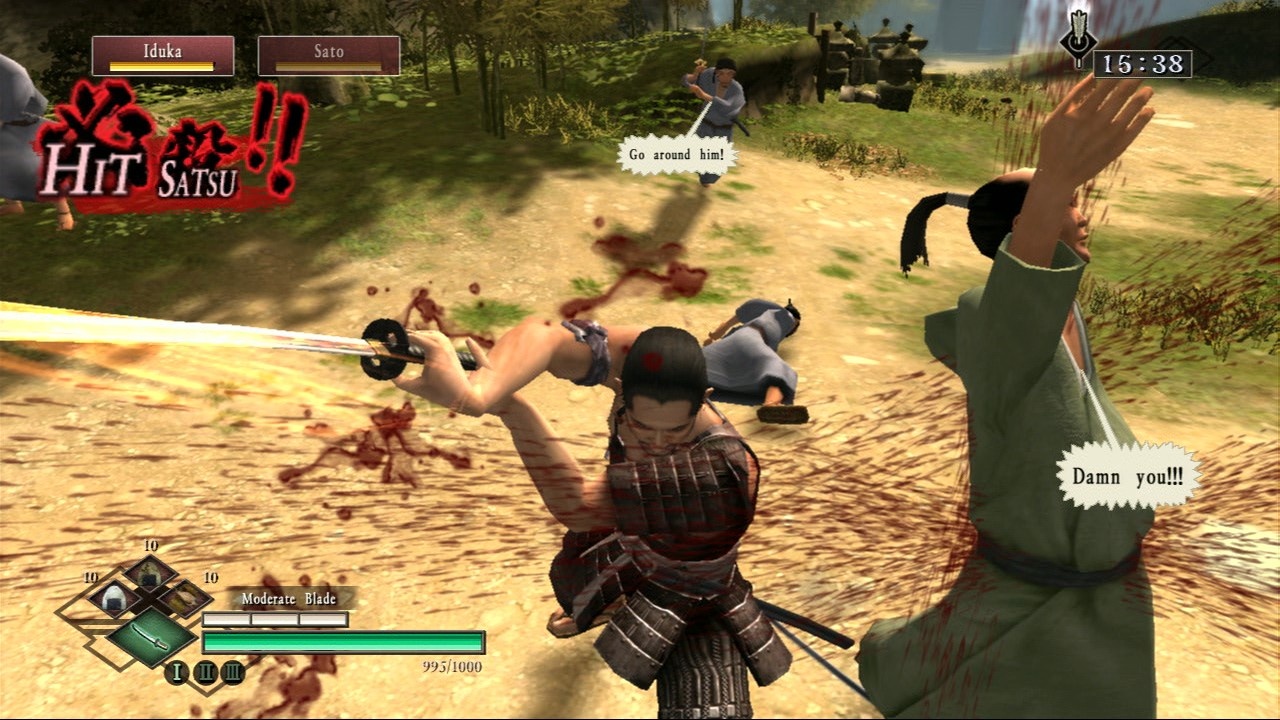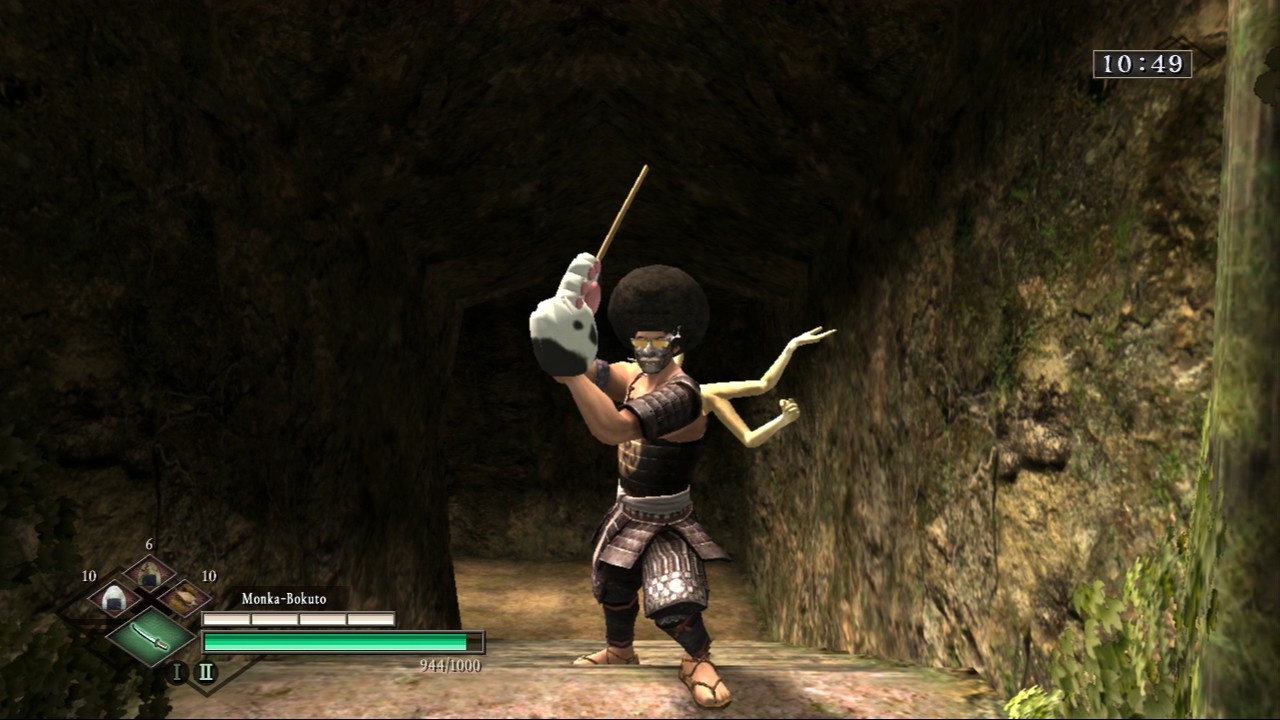Way of the Samurai 3 is a unique action hybrid with role-playing elements that immerse you into the ancient world of the samurai. Its most distinctive feature is its interesting focus on cause-and-effect relationships, which it promotes by rewarding you for good behavior and punishing you for acts of reckless villainy. Unfortunately, the gameplay is complicated by an annoying camera and an occasionally sluggish frame rate, while repetitive combat and quests severely lessen your motivation to replay. Its core mechanics and interactivity options also remain primitive and outdated, culminating in a substandard samurai adventure.

The game opens in feudal Japan during the Sengoku era, with numerous warlords vying for territory. You're cast as a wandering samurai who stumbles into Amana, a once peaceful countryside torn apart by war. There are three main faction storylines to explore, with each being distinctly different and satisfying to unravel. There are plenty of townsfolk to interact with, and their witty dialogue can trigger subplot storylines that drive you to continue playing. The most intriguing aspect of Way of the Samurai 3 is its design as an open adventure that gives you total control over your destiny; you're completely free to join any faction or make a living out of beating villagers with sticks. The game capitalizes on a cause-and-effect mechanic, prompting you to perform certain actions during key moments, such as bowing in apology or sheathing your weapon. This makes something simple, such as drawing your sword, problematic because it has both immediate and unforeseen consequences. This also keeps the action enticing because it affects potential alliances and endings. It's disappointing that your interactive options are so limited and recycled from previous games, but this is still the franchise's most novel and exciting facet.
Combat utilizes basic, fast-paced mechanics that are easy to learn but also repetitive and boring. You're limited to two attack types--swift, weak attacks or slow, powerful blows--but both are crude hack-and-slash maneuvers. You'll find a healthy variety of combat styles to master along with an abundance of skills to unlock by leveling weaponry, but these "skills" are nothing more than simple combo strings that promote mundane button mashing. An instant kill feature lets you finish off an opponent in one ferocious strike, but the amount of depth it provides is miniscule because slashing targets works far better. A push/pull mechanic enables you to knock opponents off balance by "pushing" through weak attacks and "pulling" back during strong ones. The system takes some skill to master, but it's worthwhile because it can afford you crucial time to counterattack or regenerate health via a handy quick-select item feature.
Unusual design flaws and irritating quirks make combat cumbersome. A fussy camera blocks your view whenever you're fighting near objects or backed into tight corners, which happens constantly and often results in you getting hacked to death while adjusting the camera. The combat system's intense speed keeps you moving across cluttered battlefields, but the poor physics means you'll get partially lodged inside rocks or be slammed into--and sent rolling up--trees. Targets, meanwhile, can get stuck walking into poles or other obstructions. Combat is somewhat cheapened by advantageous opponents that'll knock you down and slash you to bits before you can get back up. You'll also trigger significant slowdown when facing multiple opponents, which is especially irritating because it makes it tougher to dodge, which is something you'll need to do in busy situations.
Though the game incorporates some RPG aspects, most of these paltry offerings are rudimentary or irritating. Weapon enhancement is limited to modifying the basics, such as attack power and defense. There are no combat abilities or character growth options. Your weapon's statistics determine your character attributes, so the only customization you can do is the limited weapon enhancement. Amusing jobs are implemented for you to gain trust with each faction and help determine your ending, but they are made dull and tedious because missions are constantly recycled with only eight areas to investigate. Character customization options are fun to unlock and let you create a unique look; however, most of these only modify your character's appearance, which is marginally disappointing.

Combat is challenging, but its exacting nature is relentless and not for the impatient. A single slipup usually leads to death, which is frustrating when these mistakes are caused by elements out of your control, such as slowdown or the irritating camera. The game also starts slowly because it takes a good deal of time to finish jobs, unlock skills, and improve your weaponry before you can tackle major opponents. You'll also stumble across random cutthroats and ninjas that can finish you off in a single lucky strike, which is quite vexing for the unprepared.
You won't find breathtaking visuals in this samurai journey, but detailed feudal architecture dots the landscape. Decent texturing enriches buildings and pathways, but noticeable jagged edges and clipping create an unrefined aesthetic. Character models are less detailed and employ some ridiculous motions, though some of this is for comedic effect. The soundtrack is pleasantly tranquil, mixing modern elements with traditional Japanese instruments to impart a dramatic tone. Ambient noises--such as chirping birds and crickets--also work with the music to set a believable exploration backdrop. You can finish the game in less than 10 hours, but you'll spend three times as long unlocking everything and triggering all the different events and endings. However, limited areas and repetitive quests drastically undercut Way of the Samurai 3's replayability. Though the game's cause-and-effect focus is highly distinctive, its gameplay comprises mundane, barebones mechanics that seem almost archaic, while a troublesome camera and choppy frame rate further limits its appeal. Way of the Samurai 3 has its entertaining moments, but its lackluster next-generation debut provides little advancement over its predecessors.